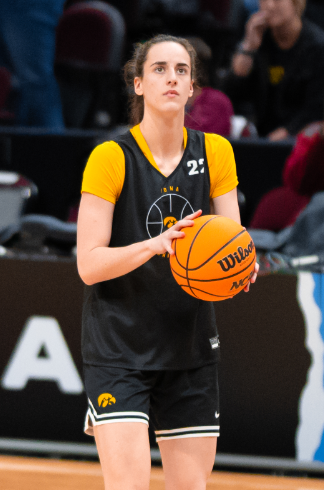
While powerlifting, weightlifting and lifting have some similarities, powerlifting’s aim is different. At its base, powerlifting is the effort to maximize absolute strength in the three main lifts of squat, bench and deadlift. While other forms of lifting place emphasis on speed, flexibility and coordination, powerlifting focuses more on raw strength.
At their first powerlifters competition last April, powerlifters Aiden Zer ’25 and Abe Lobsenz ’25 set multiple state records, and they haven’t stopped since. At a recent powerlifting meet on April 6, Lobsenz broke the bench, deadlift and squat record in his weight class and age group. He continues to pursue further state records in the 17-18 age group.
“I would like to deadlift 500, squat 400, and bench high 200’s,” Lobsenz said.
Zer, who holds multiple state records as well, is trying for the national bench record by the time he’s 18. They would be 95 pounds heavier than his current bench of 320 pounds.
“I would like to be 220 pounds, so move up weight classes, and I would like to squat 500, deadlift 600, and bench 415,” Zer said.
Zer and Lobensz started powerlifting for different reasons, but they each have found success and inspiration within the sport, showing how there is no clear path to power lifting excellence.
Lobenz first got interested in powerlifting because he wanted to become physically stronger, and less for aesthetic reasons.
“I wasn’t really focused on looking bigger or looking stronger,” Lobsenz said. “The focus of powerlifting, it’s about your strength, about how much weight you can lift.”
However, Zer’s reasons for joining the sport were different.
“I got into powerlifting at the gym because I wanted to look bigger and stronger, to gain muscle and build my body,” Zer said.
Along their powerlifting journey, Zer and Lobsenz also co-founded SHS barbell club with fellow powerlifter Sandro Aldrucci ‘25. They wanted to create an informed environment that welcomes beginning lifters and helps them learn about proper technique and diet. They focused on these goals because they believed that there are a lot of misconceptions within powerlifting committees.
“A lot of people think they know a lot more than they do,” Lobsenz said “ So, we wanted to spread credible information. That’s why we have three co leaders, we wanted a diverse array of opinions and different approaches.”
Another one of their goals was leaving a lasting legacy. They recognized how weak Connecticut is lifting wise, and they wanted to take advantage of this. The founders wanted to create a Staples lifting legacy by breaking multiple state records across various age groups.
“All the state records for our age class are extremely low,” Zer said. “They’re extremely achievable. So we want to give our knowledge to developing powerlifters or people who are already lifting but maybe not powerlifting yet.”
Despite the common goal of powerlifting, there are many different ways to achieve success within the sport.
Lobsenz uses the push, pull, legs approach. It is when you divide muscle groups by day, therefore allowing each group a two day rest, and then one day of work. He also does a lot of cardio and biking, which helps him recover faster and avoid burnout. Overall, his approach may be unconventional, but it works for him.
“I do something very different that I found to work for me and may not be in accordance with the research,” Lobsenz said. “I do very low rep ranges, like three usually average for squat bench and deadlift, and I do heavy weight and push myself to failure.”
Meanwhile, Zer takes more of a power building approach. On a typical day, he will do his squat, bench, and deadlift work. He will lower reps, with higher weight. After that, he will transition into bodybuilding work that specifically targets his weak areas. He focuses more on building muscle size, as he believes muscle size is one of the biggest factors of your strength.
“I do lower reps with higher weight, not going as hard, because you could really easily overdo it and fatigue yourself and drive yourself under the ground without any progress,” Zer said. “As you get stronger and start squatting like 600 pounds, if you go to failure on that every single time you’re just gonna overdo it and burn yourself out.”
Additionally, their diet has many differing aspects. They both follow the saying that building muscle is 70% diet, and 30% actual exercise. And they emphasize that protein is extremely important. However, they each believe other factors are important as well.
“I have a really high carb diet, and a lot of people are like, ‘you workout why would you be eating carbs,’ but it’s a huge misconception that carbs are bad,” Zer said. “They are the energy that your muscles have. So if you’re going to work out productively, you’re going to need a lot of carbs.”
Overall, through their unique training and eating styles, Zer and Lobsenz hope to pursue continued success and create a lasting legacy of powerlifting at Staples.



















































